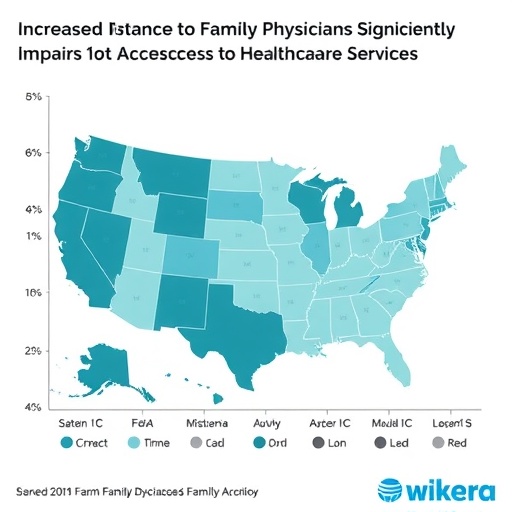US states with low vaccination rates bore the brunt of the COVID-19 surge caused by the Delta variant during the summer of 2021, says a study published today in eLife.

Credit: Public domain
US states with low vaccination rates bore the brunt of the COVID-19 surge caused by the Delta variant during the summer of 2021, says a study published today in eLife.
The study reaffirms the importance of high vaccination rates in preventing COVID-19 illness and deaths during variant-driven surges. The results may also help improve future modelling of COVID-19 surges.
To help public health officials plan and mitigate the potential effects of COVID-19, modelling teams from across the US joined forces to create the COVID-19 Scenario Modeling Hub in December 2020. The teams worked together to provide six to twelve-month nationwide and state-by-state projections of COVID-19 cases, hospitalisations and deaths.
“This study details the projections we made as the more transmissible Delta variant emerged in the United States in the spring of 2021,” explains co-lead author Shaun Truelove, Assistant Scientist at the Johns Hopkins Bloomberg School of Public Health, Baltimore, Maryland, US. “Using nine different models and four defined scenarios, each team assessed how virus control measures, such as mask wearing or vaccination availability and uptake might change the trajectory of COVID-19 as the Delta variant spread at state and national levels.”
The models projected that cases would begin to rise in July 2021 and peak in mid to late September 2021, with the number of hospitalisations and deaths also rising. They also predicted that states with the lowest vaccination rates would see the most cases, hospitalisations and deaths.
“While the timing of these projected surges was accurate, the real numbers during the Delta surge far surpassed what we projected,” says co-lead author Claire Smith, Doctoral Student at Johns Hopkins Bloomberg School of Public Health. “For example, in the worst-case scenario, the models projected about 516,000 cases during the first four weeks of the projection period (July 4 to July 31, 2021), but about 1.2 million occurred during this period.”
While their predictions about which states would see the worst surges were accurate, even these states saw more cases than anticipated. “We have learned a lot about this virus since the Delta variant, especially about waning of immunity and immune escape variants. The lack of these in the models had a major impact on our expectations of how large the resurgence could be,” says Truelove. In their projections, most models did not include waning of natural or vaccine-derived immunity; this and other incorrect assumptions about the virus or human behaviour during the surge likely contributed to these underestimations. These results highlight the challenges of modelling an ongoing epidemic and may help improve future modelling efforts.
States that met higher goals for vaccination early in the Delta surge averted more than 1.5 million cases and 21,000 deaths, the teams suggest. “These estimates should be treated with caution however, because they do not include the impact of waning which reduces vaccine effectiveness, particularly against symptomatic disease. Our estimates of vaccine protection against severe disease (hospitalisations and deaths) are more robust. Overall, because of the underestimation of deaths associated with the Delta wave, the actual numbers of lives saved are likely much higher,” says Cécile Viboud, a senior research scientist at the Division of International Epidemiology and Population Studies, Fogarty International Center, National Institutes of Health, US.
“Efforts to increase vaccination rates are critical and will save lives before and during future resurgences,” she concludes.
Viboud is a co-senior author of the study alongside Michael Runge, a research ecologist at the Eastern Ecological Science Center, United States Geological Survey, Laurel, Maryland.
##
Media contacts
Emily Packer, Media Relations Manager
eLife
+44 (0)1223 855373
George Litchfield, Marketing and PR Assistant
eLife
About eLife
eLife transforms research communication to create a future where a diverse, global community of scientists and researchers produces open and trusted results for the benefit of all. Independent, not-for-profit and supported by funders, we improve the way science is practised and shared. From the research we publish, to the tools we build, to the people we work with, we’ve earned a reputation for quality, integrity and the flexibility to bring about real change. eLife receives financial support and strategic guidance from the Howard Hughes Medical Institute, Knut and Alice Wallenberg Foundation, the Max Planck Society and Wellcome. Learn more at https://elifesciences.org/about.
To read the latest Epidemiology and Global Health research published in eLife, visit https://elifesciences.org/subjects/epidemiology-global-health.
Journal
eLife
DOI
10.7554/eLife.73584
Article Title
Projected resurgence of COVID-19 in the United States in July-December 2021 resulting from the increased transmissibility of the Delta variant and faltering vaccination
Article Publication Date
21-Jun-2022




